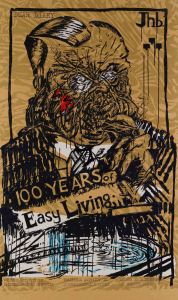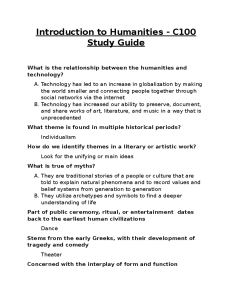Are you looking to elevate your movements and express your unique spirit? Here are some useful dance tips that can help you find freedom and joy on the dance floor. Dance like nobody’s watching and tap into the energy of various styles, from thrilling Malian dance traditions to liberating dance release techniques inspired by choreographers like Jeffrey L. Page. Remember, it’s all about the experience, not perfection—embrace your inner rhythm and let your body communicate your story in a cathartic release. So let go of inhibitions, and join the celebration of movement where each step is a reflection of your spiritual journey into the art of dance.
When it comes to improving your dancing skills, enhancing your overall experience through creative movement is paramount. Embrace the art of performing as if you are in a sanctuary of expression, exploring avenues that encourage spontaneity and individuality. Whether you refer to it as spiritual dance or simply losing yourself in the beat, tapping into different cultures’ rhythms can enrich your performance. Techniques focused on releasing tension in your body will allow spontaneity to flourish, inviting you to dance freely like you’re sharing a personal narrative. Let go of self-consciousness and harness the transformative power of dancing with passion and intent.
Embracing Your True Self through Dance
Dance is a profound method of expressing oneself, transcending superficial concern about technique or appearance. The philosophy of dancing like nobody’s watching encourages a liberating experience where individuals can be their authentic selves. Jeffrey L. Page emphasizes the importance of releasing the self-consciousness that often hinders our movement, enabling us to express our deepest feelings through body language. When we step onto the dance floor, whether in a crowded club or alone in our living rooms, we tap into a wellspring of emotions and stories that our bodies yearn to share.
Activating the mindset of ‘dance like nobody’s watching’ allows dancers to connect deeply with their inner selves, promoting a powerful cathartic release. In his classes, Page creates an environment where students are encouraged to shout and move freely, unlocking emotions that may have been trapped within. This approach not only enhances the joy of dancing but also integrates a spiritual dimension that echoes traditional practices like the Malian djine foly, where dancers reach a trance-like state, channeling their energies into pure expression.
Dance Tips for Spiritual Release
For those looking to explore the spiritual side of dance, Jeffrey L. Page offers insightful tips that can transform an ordinary experience into something profound. First and foremost, immersing oneself in the rhythm and flow of the music is essential. Let the sound wash over you, helping to shake off the weights of daily life. Engaging in intentional movement allows the dancer to release pent-up emotions, fostering an atmosphere of spiritual freedom. This is evident in various cultures, such as the Malian dance traditions, where the act of dancing is not merely for entertainment but serves as a conduit to connect with spiritual realms.
Another key dance tip lies in the practice of letting go of inhibitions. Much like the concept of ‘catching the holy ghost’ in certain Black church traditions, allowing oneself to move without constraints can lead to extraordinary emotional breakthroughs. As Page suggests, encouraging feelings of joy, sadness, or euphoria through uninhibited movement can facilitate a spiritual transformation. It’s not about the steps or looking glamorous; it’s about the release and connection to the universe that dance enables. So, next time you dance, remember to embrace this freedom and allow the music to guide you towards deeper spiritual connections.
Unlocking Creative Expression through Dance
Dance offers a unique platform for creative expression, allowing individuals to communicate their stories, joys, and struggles through movement. The process of choreography can be likened to writing an essay; just as every word and sentence conveys a narrative, every dance step tells a story. According to Page, accessing this realm of creativity requires a level of vulnerability, wherein the dancer feels safe to express their true self without fear of judgment. This connection fosters an environment ripe for innovation, helping dancers to discover new ways to articulate their emotions further.
Incorporating elements from various dance traditions, such as the intricate movements of Malian dance, can enhance one’s expressiveness. By embracing different styles and techniques, dancers can infuse their performances with cultural richness and depth. This not only amplifies creativity but also connects the dancer to a broader artistic heritage, enriching the overall experience. Therefore, dancers are encouraged to explore different genres and allow their individuality to shine through, creating a mosaic of movements that reflects their unique perspective.
The Transformative Power of Dance
Engaging in dance can serve as a transformative experience, impacting both mental and emotional well-being. The act of dancing cultivates a sense of joy and freedom, allowing individuals to break away from societal norms and expectations. Page articulates that dance has the potential to unlock an inner reservoir of feelings, offering a healthy outlet for self-expression. This transformative power is crucial for personal growth and emotional resilience, enabling people to confront and release the burdens they carry.
Moreover, experiencing diverse dance forms, especially spiritual dances rooted in culture, can enrich this transformative journey. For instance, practices like the Malian djine foly invite dancers to reach ecstatic states, allowing for deeper spiritual connections and self-discovery. By embracing such traditions, individuals not only enhance their dance practice but also engage in a holistic healing process that fosters emotional and spiritual well-being. Thus, the benefits of dance extend beyond physical movement, offering profound opportunities for personal transformation.
Finding Your Unique Dance Style
Every dancer has a unique style waiting to be discovered. Embracing individuality in dance is essential, as it allows each person to connect with their authentic expression. Page encourages dancers to experiment with various styles and movements until they find what resonates with them. By immersing oneself in different dance forms, including contemporary, classical, or even traditional ethnic dances like those found in West African cultures, dancers can uncover their personal voice. It is this journey of exploration that often leads to the development of a signature style.
Another aspect of finding your unique dance style is the integration of emotion and intention into every movement. Page’s teachings emphasize the importance of dancing with a purpose, whether that be joy, sorrow, or a desire for liberation. This conscious engagement allows dancers to make more profound connections to their movements and performances. As dancers continue on their journey of self-exploration, they may also be inspired by the emotional storytelling present in spiritual and cultural dances, further enriching their personal signature and creating a more meaningful dance experience.
Dance as a Means of Social Connection
Dance is not only a personal expression but also a powerful means of social connection. Participating in group dance sessions creates a sense of community, allowing individuals to share their experiences and emotions collectively. Page highlights the significance of this communal aspect, as dance can serve as a bridge between different cultures and backgrounds. Through dance, we can celebrate our uniqueness while fostering connection and understanding among diverse groups.
Furthermore, dance can act as a powerful tool for social change. By bringing attention to cultural practices and representing stories that are often overlooked, dance provides a platform for expression and advocacy. This is especially evident in styles that embrace spiritual themes, as they communicate deeply-rooted traditions and experiences that need to be shared. As movements evolve and genres blend, dance continues to be an essential medium for cultivating empathy, connection, and cultural awareness within society.
The Importance of Movement Variability
Variety in movement is crucial for dancers aiming to enhance their skill set and artistic expression. Page advocates for incorporating diverse techniques and styles, as they contribute significantly to a well-rounded dancer. Engaging with different dance forms not only boosts physical capabilities but also introduces new ways to interpret music and movement. This variability allows dancers to explore different rhythms and cues, ultimately enhancing their versatility on the dance floor.
Beyond physical techniques, movement variability encourages dancers to express a wider range of emotions and stories. By experimenting with various styles, such as incorporating spiritual dance elements, performers can engage audiences on deeper levels. This rich tapestry of movement not only showcases the dancer’s adaptability but also reflects the myriad influences in our society. Consequently, embracing a broad spectrum of dance forms can elevate one’s artistry and connect the dance to greater cultural narratives.
Cultivating Joy through Dance Practices
Cultivating joy within dance practices is vital for personal fulfillment and mental health. Page’s approach to teaching emphasizes the necessity of making space for joy in each movement. Whether through playful improvisation or engaging with upbeat music, finding moments of happiness can significantly enhance the overall experience of dancing. When dancers prioritize joy, they often discover a liberating aspect of movement that breaks down barriers and fosters a deeper connection to themselves and their surroundings.
In many cultural dance practices, such as those found in Mali, joy is an integral component that unites participants. The communal aspect often elevates the experience, echoing the sentiment that dance is about more than the individual—it’s about creating shared moments of happiness. By celebrating this interconnectedness, dancers can not only experience personal joy but also contribute to a collective sense of euphoria and well-being. Emphasizing joy in dance rituals enhances the spiritual experience, reminding participants of the rhythm of life and the beauty of being alive.
Frequently Asked Questions
What are some dance tips to help me dance like nobody’s watching?
To dance like nobody’s watching, embrace spontaneity and self-expression. Focus on the music and let your body move freely without self-judgment. Practice dance release techniques, such as shaking out tension, to help you connect with your inner rhythm and feel liberated in your movements. Remember, the goal is to enjoy the experience rather than worry about how you look to others!
How can I incorporate spiritual dance into my practice?
Incorporating spiritual dance into your practice involves creating a mindful and meditative space. Explore Malian dance traditions and the concept of djine foly, which encourages dancers to enter a trance-like state. Allow yourself to express emotions through movement and let go of inhibitions, fostering a deeper connection with your spirit and the dance.
What are Jeffrey L. Page’s top tips for finding release in dance?
Jeffrey L. Page emphasizes the importance of letting go of self-consciousness and allowing yourself to express freely. His tips include: shout or vocalize to release pent-up energy, focus on the joy of movement, and engage fully with the rhythm. Embrace the dance release techniques that work for you, and remember that no one is judging how you look!
What is the significance of dance release techniques in modern dance?
Dance release techniques are essential for freeing the body from tension and enhancing fluidity of movement. These techniques help dancers express emotions authentically and connect with the music. They are especially significant in spiritual dance, where the aim is to transcend the physical and reach a deeper emotional state, as seen in practices like Malian dance traditions.
How can dance like nobody’s watching improve my confidence?
Dancing like nobody’s watching allows you to focus on self-expression rather than external validation. This freedom can boost your confidence by helping you appreciate your unique dance style. Engaging in dance release techniques can further enhance this effect, allowing you to shed insecurities and move with joy and authenticity.
| Dance Tip | Description |
|---|---|
| Dance with Absence of Fear | Embrace your movements without worrying about appearance. Let go of self-judgment and just dance. |
| Access Your Inner Spirit | Connect with your emotions and allow your body to express them through dance. This helps in achieving a trance-like state. |
| Release Tension with Noise | Sometimes, shouting or vocalizing can help release pent-up feelings, contributing to more authentic movements. |
| Make Dance a Story | Think of your dance as a narrative; how you tell it with your body can impact how it is received by others. |
Summary
Dance tips are essential for anyone looking to improve their skills and confidence on the dance floor. It is important to embrace the freedom of movement and express yourself without fear of judgment. The journey of dance can be cathartic, allowing you to release hidden emotions and connect with your spirit. Incorporating vocal expressions like shouting can also help in letting go of inhibitions. Remember to think of dancing as storytelling; the way you move conveys a narrative that can resonate with others. By keeping these dance tips in mind, you can unlock your true potential on the dance floor.




